Top 20 Fast-Casual Restaurants To Watch Out For in 2026

The Fast-Casual Boom Is Just Getting Started
The fast-casual industry is evolving at a rapid pace, and 2026 is shaping up to be a breakout year for it. The US market alone is projected to grow by $84.5 billion from 2025 to 2029, highlighting the scale and momentum of this segment. As labor costs climb and customer expectations skyrocket, the most successful chains are those blending speed, quality, and operational agility.
In this roundup, we highlight the top 20 fast-casual restaurants to watch in 2026. These brands are building the next generation of dining with tech, talent, and thoughtful execution. If you're looking for inspiration, competition, or a roadmap to scale, these names belong on your radar.
What’s Driving the Next Wave of Fast-Casual Growth?
Fast-casual isn’t just filling the gap between fast food and full-service dining. It’s carving out a unique niche defined by:
- Speed and convenience
- Quality ingredients
- Elevated experiences
- Digital integration
Fast-casual chains are reshaping what modern consumers expect from a meal. In 2026, innovation, labor optimization, and frictionless ordering will lead the charge.
For operators, this means mastering back-of-house operations, investing in automation, and rethinking labor deployment, all while delivering crave-worthy experiences at scale.
Top 20 Fast-Casual Restaurants to Watch in 2026
From tech innovators to bold franchise expanders, these 20 brands are setting the tone for what's next in North American fast-casual.
1. Chipotle Mexican Grill
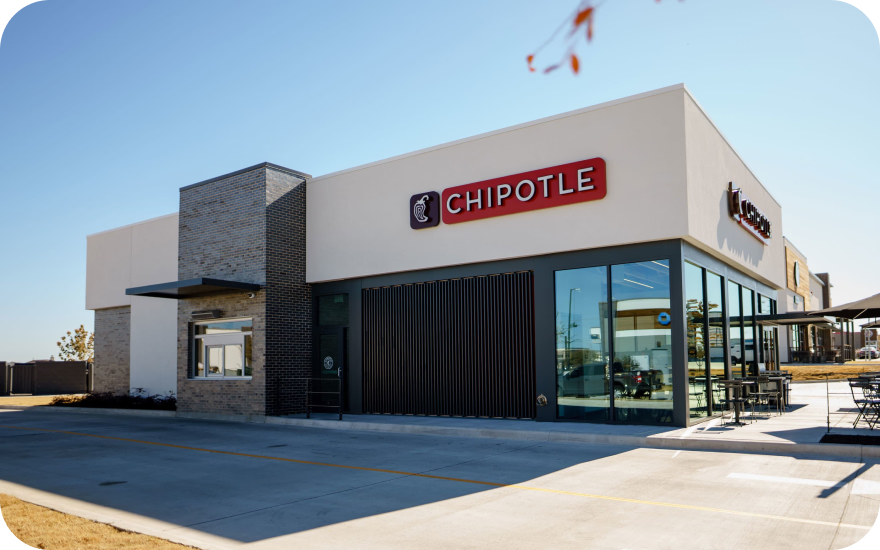
Chipotle continues to lead the fast-casual space with a tech-driven growth model focused on digital convenience and automation. As of October 2025, it operates more than 3,830 restaurants in North America, including over 50 in Canada, and expects to open 315-345 new locations by year-end. More than 80% of these will feature Chipotlanes, its drive-thru lanes for digital orders, which now make up most new openings.
In Q3 2025, digital sales accounted for 36.7% of revenue, indicating strong customer adoption of mobile ordering and pickup. Chipotle’s AI-powered kitchens and automated food prep lines are enhancing efficiency, supporting its growth as a digital-first, scalable fast-casual chain.
2. Sweetgreen

Sweetgreen is growing in the fast-casual space with a tech-driven model focused on automation, efficiency, and elevated cuisine. As of 2025, the chain operates approximately 250 restaurants and plans to open at least 40 new locations by year-end, roughly half featuring its “Infinite Kitchen” concept, powered by robotics and data, which delivers speed, consistency, and quality all at once. By combining health-focused branding with automation, it’s proving that Sweetgreen can turn operational excellence into a scalable business model that elevates mission-driven dining.
3. Shake Shack

Shake Shack is redefining premium fast-casual with a growth model anchored in technology and convenience. The company currently operates around 375 company-operated US locations and is targeting between 80 and 85 new locations in 2025, with a notable emphasis on suburban, drive-thru, and kiosk-only formats. Its self‑service kiosks have become the largest ordering channel, improving customization and labor efficiency. By blending upscale brand equity with streamlined operations and speed, Shake Shack’s strategy demonstrates how premium fast-casual can evolve to meet accessibility demands without compromising its identity.
4. Pokeworks
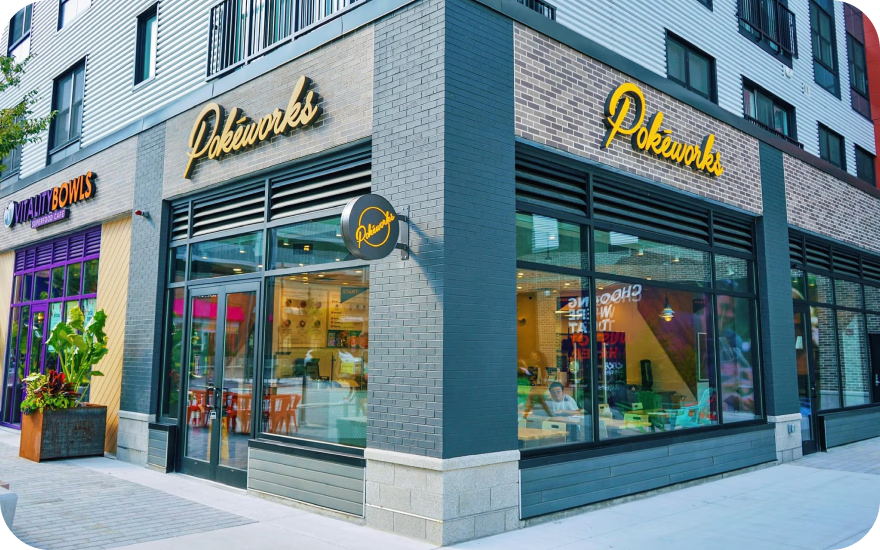
Pokeworks is growing rapidly in the fast-casual segment with customizable poke bowls, burritos, and salads in a fresh, modern setting. As of early 2025, the brand operates 70+ locations in the US, Canada, and Taiwan, and aims to exceed 100 units in the coming years. Many locations offer dine-in seating, and the chain’s efficient, compact store design helps each location generate strong sales (around $1 million annually). With a robust digital platform, loyalty program, and flexible store formats, Pokeworks shows how a premium, healthy fast-casual concept can scale efficiently.
5. Noodles & Company

Noodles & Company is transforming from a traditional pasta brand into a digital-first player, featuring virtual brands and streamlined operations. As of mid‑2025, it operates approximately 450 – 460 US restaurants across 31 states, with over 55% of its orders now coming through digital channels, and its loyalty program has grown to over 5 million members, who generate roughly twice the revenue of non‑members. Its willingness to test new formats shows how legacy fast-casual chains can rejuvenate growth through menu agility and tech-forward adaptation.
6. MOD Pizza

MOD is built around an employee-first culture and efficient assembly-line service, giving it a competitive edge by fostering low turnover and high consistency across its build-your-own pizza model. With approximately 485 US locations as of early 2025, the company has grown quickly, yet it emphasizes people as a performance driver — a compelling lesson proving that empowered teams deliver operational excellence.
7. Wingstop
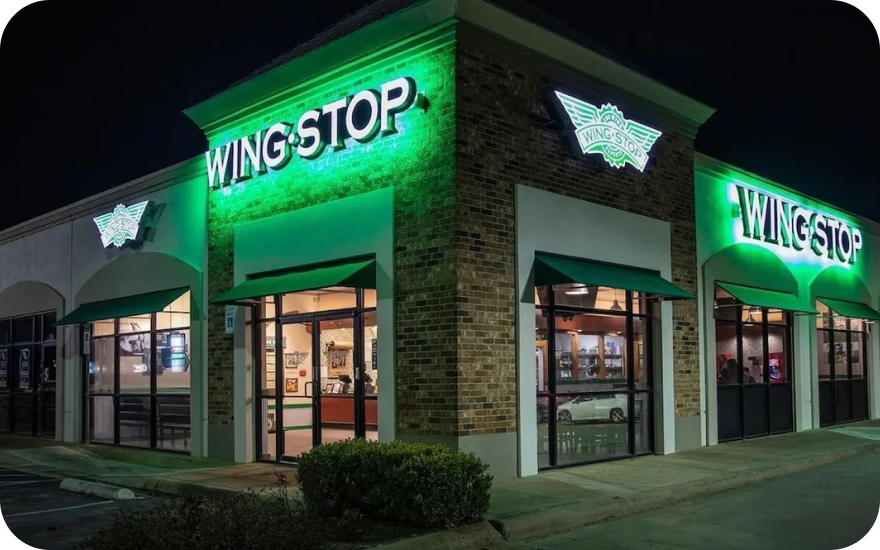
Wingstop is scaling rapidly and redefining the premium fast‑casual wing category with strong franchise momentum and a digital‑first mindset. Its tech-centric strategy illustrates how even single-item specialists can dominate by perfecting operational focus. As of June 2025, it operated approximately 2,818 restaurants globally, including about 2,411 in the US, representing a 15.8 % growth in unit count. System‑wide sales rose to $4.8 billion, while digital sales captured more than 70% of total sales. With this aggressive expansion, Wingstop’s model of bold flavor, high digital penetration, and strong unit economics illustrates how a fast‑casual brand can scale globally while maintaining category leadership.
8. Blaze Pizza
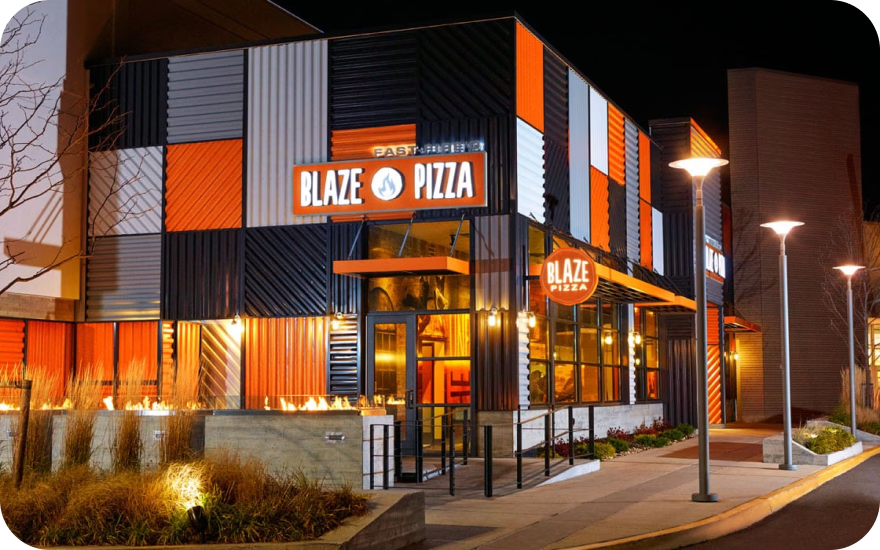
Blaze Pizza is redefining fast-casual pizza with its rapid expansion and franchise-driven model. The brand operates nearly 300 restaurants across 38 states and three countries, including 15 locations in Canada. In 2025, the company is accelerating growth by consolidating 11 company-owned California locations into a single large franchise group, thereby enhancing operational consistency and scaling its strength. With around 35% of traffic now digital and a revamped loyalty program boasting over 5 million members, Blaze is proving that strong digital channels and franchising discipline can power a fast‑casual brand’s next phase of growth.
9. CAVA
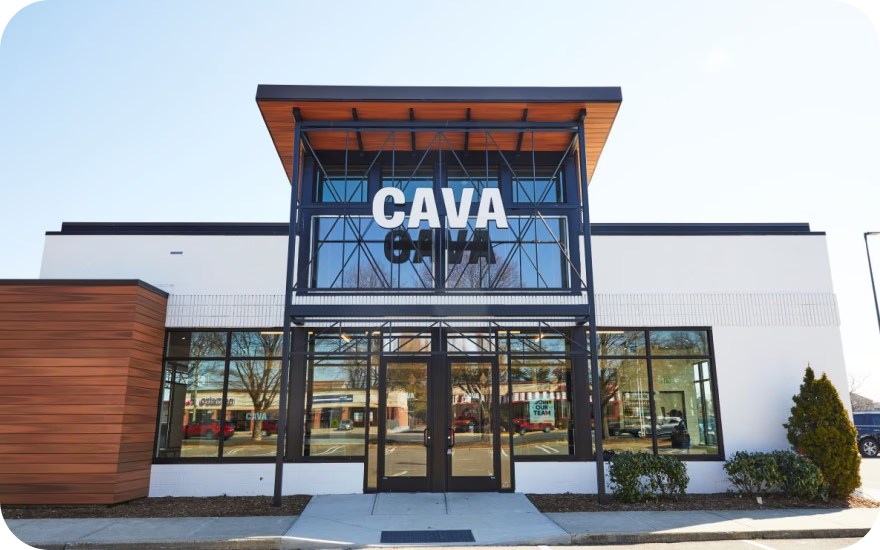
CAVA has emerged as a leader in the modern Mediterranean fast-casual space, known for its bold flavors, customizable bowls, and commitment to fresh, healthy ingredients. In 2018, the company acquired Zoës Kitchen, a larger, established competitor in the same category, in a deal that significantly expanded its national footprint. After the acquisition, CAVA began converting Zoës Kitchen locations into its own restaurants, accelerating growth while keeping real estate and build-out costs low. As of Q2 2025, the brand operates about 398 restaurants, marking a 16.7 % increase year‑over‑year. Since acquiring Zoës Kitchen, CAVA has converted well over 120 former Zoës locations into its own brand, leveraging those sites for a faster rollout and cost-efficient growth. CAVA demonstrates how a modern fast‑casual concept can balance flavor, health, and scalability through smart acquisition, data‑driven operations, and brand reinvention.
10. Five Guys
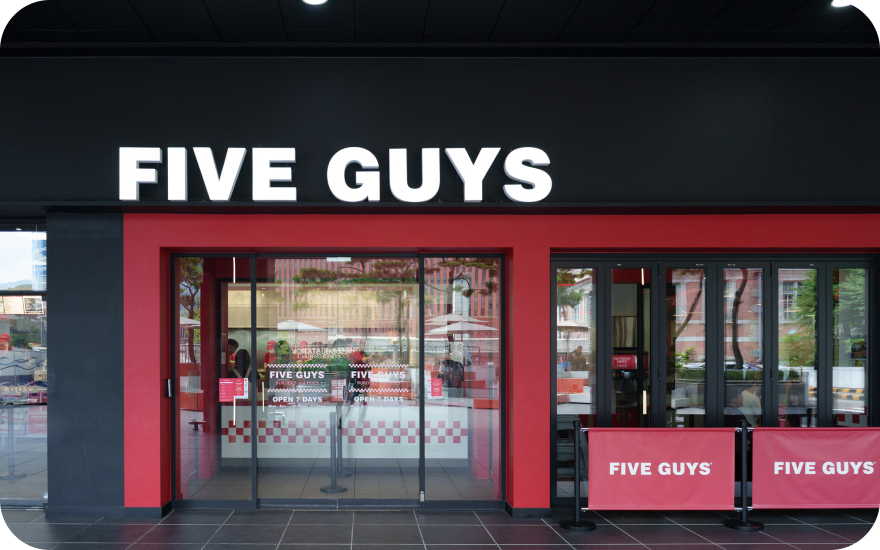
Five Guys continues to grow by sticking to its core formula — fresh ingredients, simple execution, and operational transparency. As of early 2025, the brand operates over 1,900 locations across 29 countries, including roughly 1,500 US restaurants. Unlike many competitors chasing digital trends, Five Guys avoids flashy tech and heavy marketing, instead relying on word-of-mouth and consistency to fuel its global expansion. Its success proves that in a crowded fast-casual field, quality and execution remain the strongest differentiators.
11. B.GOOD
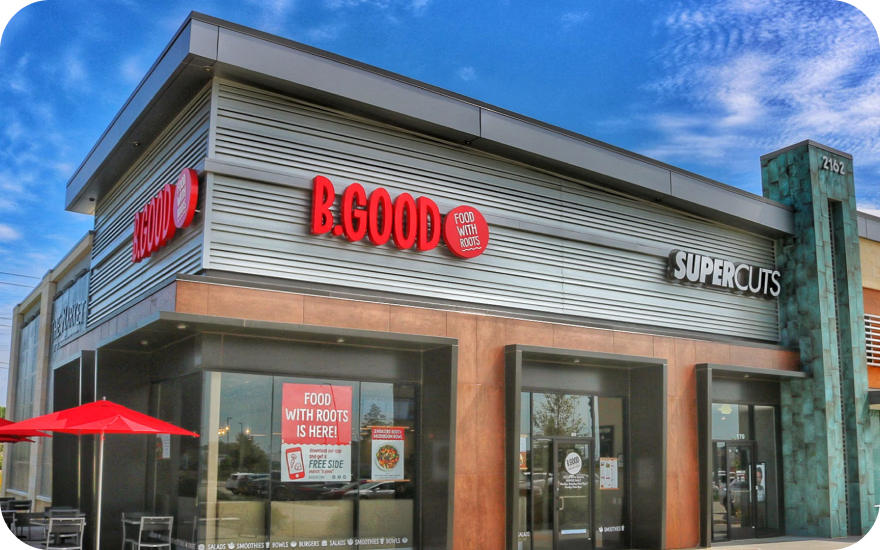
B.Good stands out in the fast‑casual space by championing a “food with roots” philosophy. It prides itself on serving clean, locally sourced ingredients in an approachable format. While its current unit count remains modest compared to larger national chains, B.GOOD operates around 60 locations in the US and roughly 80 across the US, Canada, and Europe. The brand’s deliberate growth strategy emphasizes sustainability, community and operational simplicity, serving as a reminder that even in a crowded segment, strong values and clear positioning can carve out a meaningful niche.
12. Tropical Smoothie Cafe
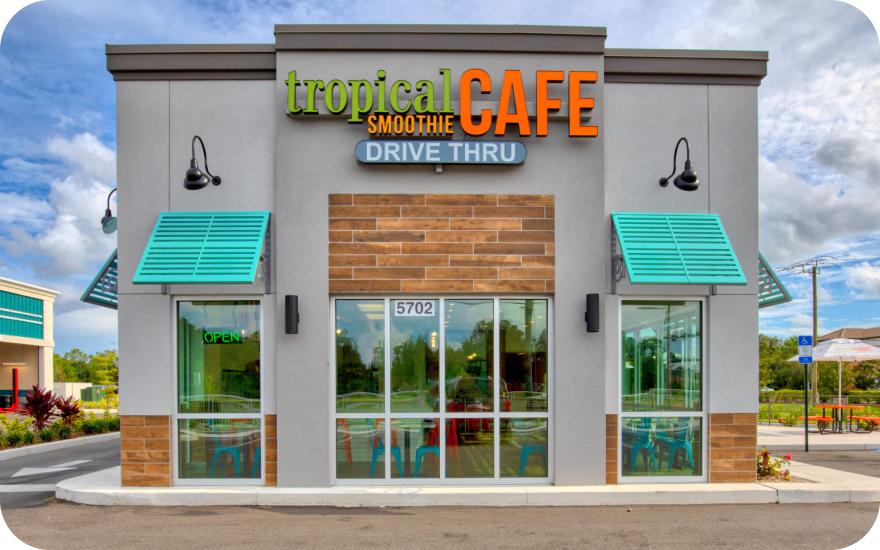
Tropical Smoothie Cafe is scaling rapidly through a simple, health‑focused menu and a franchise‑driven model built for efficiency. The brand surpassed 1,500 cafes as of late 2024, operating across 44 states. In 2024 alone, the chain opened 161 new locations, with over 70% of those driven by existing franchisees — highlighting strong growth momentum and franchisee confidence. Its operations are designed for low‑labor complexity (smoothies, wraps, bowls) paired with high consumer demand, making Tropical Smoothie Cafe a standout example of profitable, repeatable growth as it heads into 2026 and beyond.
13. The Habit Burger Grill

The Habit Burger Grill continues to expand its footprint through a focus on char-grilled flavor, digital convenience, and steady franchise growth. As of mid-2025, the brand operates about 379 locations across the US, with roughly 263 in California. Habit is extending beyond its West Coast base through strategic franchising and tech-enabled ordering. Its mix of quality, efficiency, and brand consistency highlights how established fast-casual chains can scale sustainably while maintaining culinary appeal.
14. Jersey Mike’s Subs
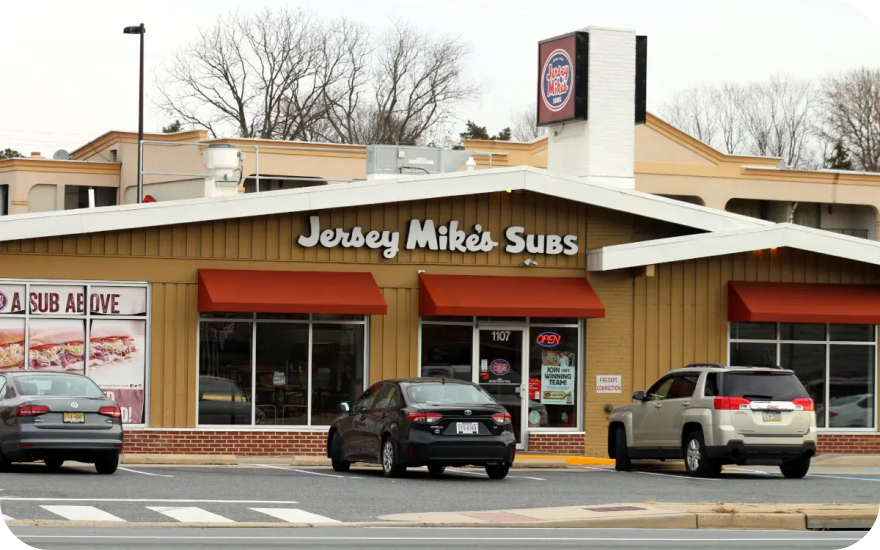
Jersey Mike’s remains one of the fastest-growing names in the fast-casual industry, driven by streamlined operations, franchisee support, and strong community connections. As of 2025, the brand operates more than 3,000 locations across the US and is expanding into Canada with plans for 300 new units over the next decade. Its consistent operations, strong community marketing, and fresh product focus make it one of the best examples of scalable, high-integrity franchise success.
15. Portillo’s

Portillo’s is scaling its famous Chicago-style street-food model into a national fast-casual player, anchored by high-volume units and a streamlined growth strategy. With 95 full-size restaurants across 10 states, Portillo’s is targeting 12–15% annual unit growth through new openings and optimized store formats. By focusing on high-volume locations, lean operations, and expansion into new markets, Portillo’s is positioning itself to become a scalable national concept while preserving its iconic brand and bold food identity.
16. Just Salad
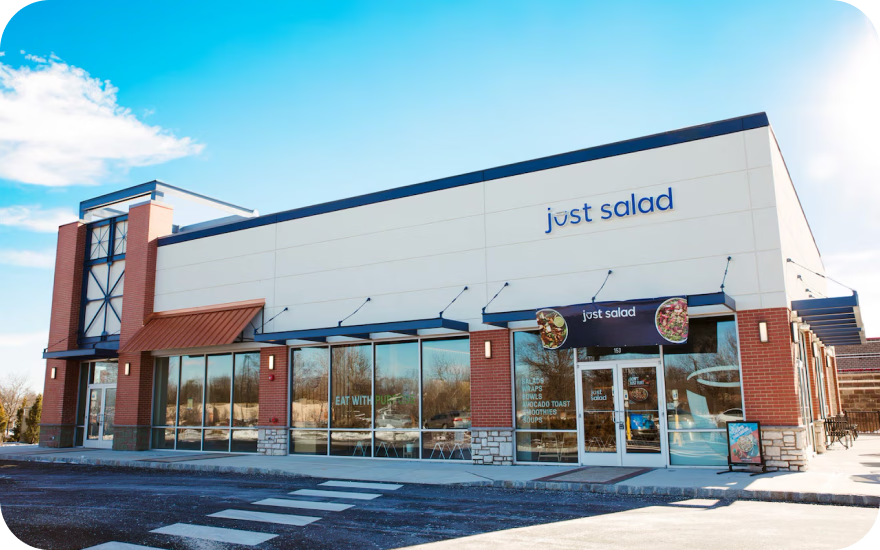
Just Salad is carving out a niche in the fast-casual space by focusing on health, sustainability, and convenience. Nearing 100 locations across the US as of 2025, the chain is actively expanding, having recently opened its first drive-thru location and securing $200 million in growth capital. Through initiatives like reusable-bowl programs and carbon-labeled menus, the brand shows how purpose-driven values and disciplined expansion can create a modern, scalable fast-casual concept.
17. Mendocino Farms
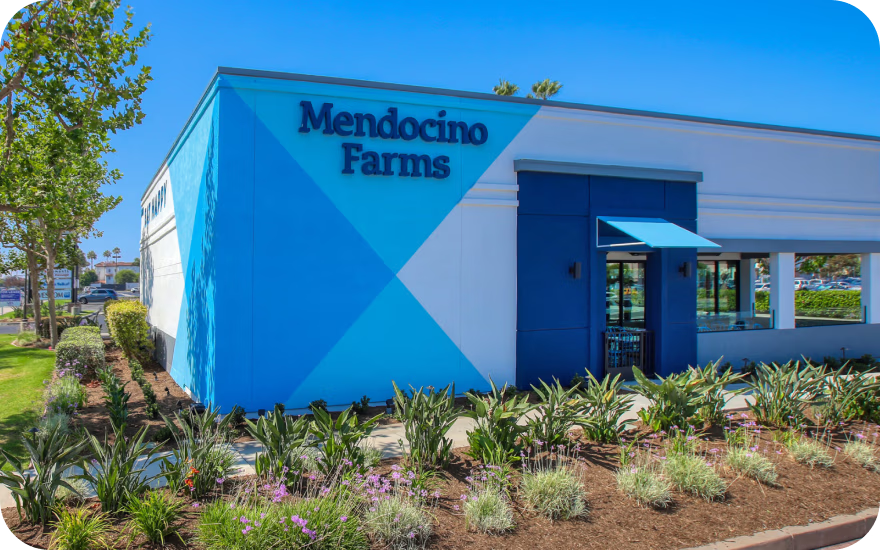
Mendocino Farms is poised for the next chapter of growth in the fast‑casual space, known for its chef‑driven sandwiches, salads, and commitment to fresh, sustainable ingredients. As of 2025, the chain has expanded to 90 locations across the US, with a target of reaching 150 units within the next five years. With a strong brand identity, simple operations, and a mission-driven ethos, Mendocino Farms stands out as a fast-casual chain that’s not just scaling but doing so with a clear strategic playbook.
18. Panera Bread
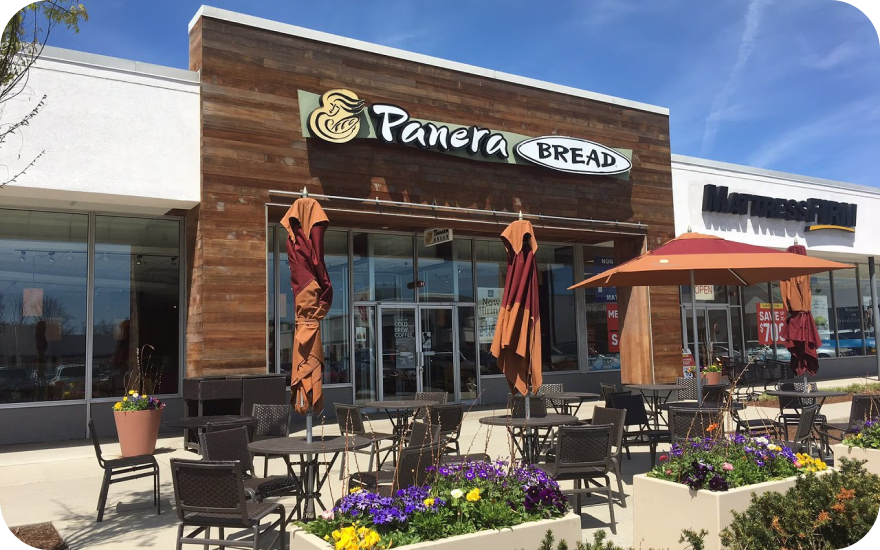
Panera Bread is executing a digital-first transformation at scale, anchored by its subscription and loyalty offerings. As of 2025, Panera operates approximately 2,223 bakery-cafés across 48 US states and Ontario, Canada. Meanwhile, the brand reports that over 55% of its sales now come from digital or e-commerce channels, with more than 61 million MyPanera loyalty members. Its “Unlimited Sip Club” and streamlined app-based ordering are increasing repeat visits, proving that seamless digital ecosystems can drive customer retention as effectively as menu innovation.
19. Raising Cane’s
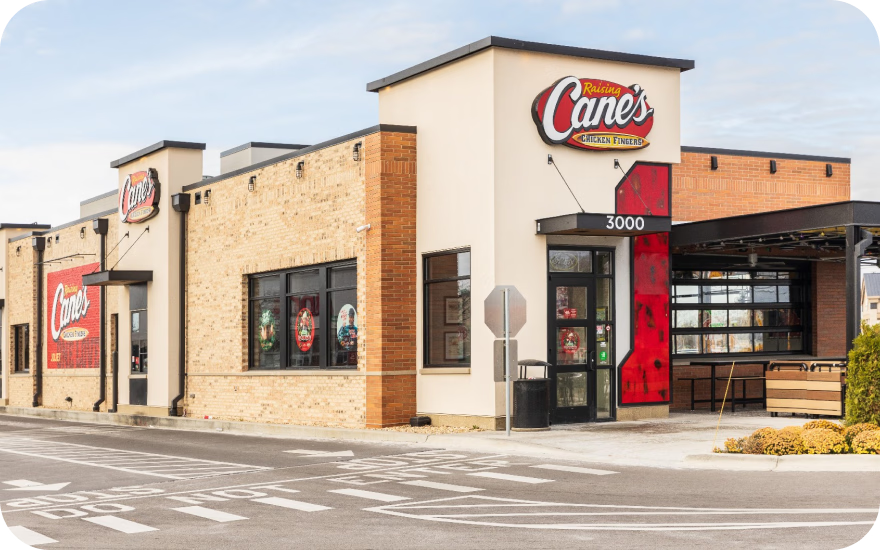
Raising Cane’s is scaling rapidly with a laser-focused menu of chicken fingers, fries, Texas toast, and sauce, and the results are clear. The chain now has over 900 restaurants in the US and reported system-wide sales of roughly $5.1 billion in 2024. In that year, it opened a record 118 new stores. Leadership expects to finish 2025 with nearly 1,000 units, and is targeting about 1,600 restaurants and $10 billion in sales by the end of the decade. With its simple, repeatable format and strong brand momentum, Raising Cane’s is a brand to watch as it extends from regional favorite to national powerhouse.
20. QDOBA Mexican Eats

QDOBA is accelerating its footprint in the fast-casual Mexican segment, driven by a strong franchise model and aggressive development pipeline. The brand recently celebrated the opening of its 800th restaurant across the US, Canada, and Puerto Rico. It has secured over 500 development commitments and is targeting up to 1,600 restaurants by 2032, reflecting its ambition to double in size within the next decade. With customizable menu options, expansion into non-traditional venues (such as airports, universities, and military bases), and a franchising model that enables rapid growth, QDOBA is a brand to watch in the evolving fast-casual space.
Key Operational Takeaways from the Top 20 Fast-Casual Restaurants
The brands defining fast-casual success treat operations as a core competitive advantage. With common themes driving their growth, including:
- Digital-first customer journeys
- Automated or simplified back-of-house workflows
- Optimized scheduling and labor management
- Centralized production for consistency
- Tech adoption without sacrificing hospitality
In 2026, operational efficiency is no longer optional. Chains that fall behind in technology, workforce empowerment, or process optimization risk being left behind in an increasingly competitive market.
Ready to Compete in 2026? Optimize Like the Leaders in Fast-Casual Dining
Whether you’re a regional chain or a scaling franchise, the message is clear: operational excellence will determine who thrives in 2026.
Push Operations helps fast-casual restaurants reduce labor costs, automate compliance, and empower teams with intuitive scheduling and payroll tools.
If you're aiming to grow or streamline operations, schedule a demo with Push and future-proof your restaurant operations.


